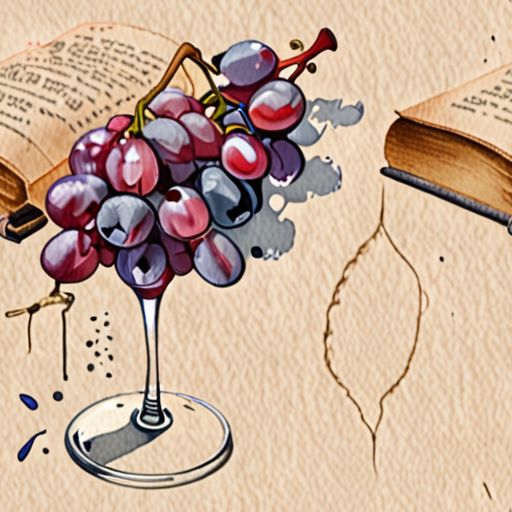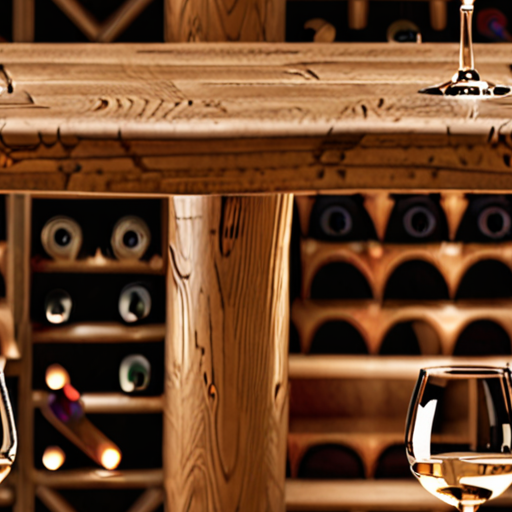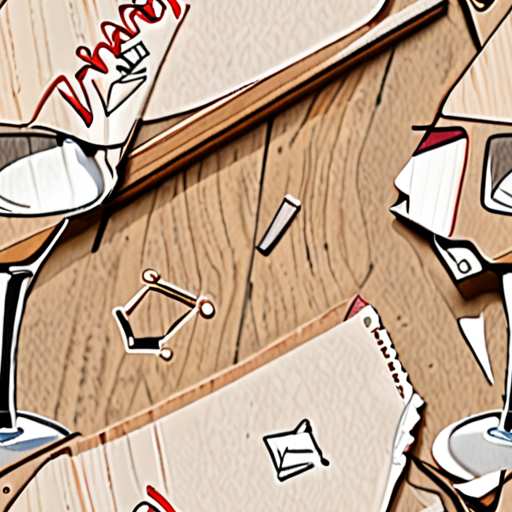When it comes to evaluating and comparing wines, having a structured approach can make all the difference in enhancing your overall wine appreciation experience. One valuable tool that can aid in this process is a well-designed wine tasting scorecard, which serves as a comprehensive guide to help you accurately assess and differentiate between various wines. By utilizing a standardized format, you can ensure consistency in your evaluations and develop a deeper understanding of the nuances that distinguish one wine from another.

Creating a Comprehensive Wine Tasting Scorecard
To elevate your wine game and become a connoisseur, it’s essential to develop a systematic approach to evaluating and comparing different wines.
- Define Your Evaluation Criteria
- Develop a Scoring System
- Choose a Format for Your Scorecard
- Evaluate Each Wine
- Analyze and Compare Scores
- Refine Your Approach
Determine the characteristics you want to assess in each wine, such as color, clarity, aroma, flavor, acidity, tannins, body, finish, and overall balance.
Create a scoring system that assigns numerical values to each characteristic based on its intensity, quality, and impact on the overall wine experience.
Select a format that suits your needs, such as a spreadsheet, a notebook, or a digital app, and ensure it allows for easy tracking and comparison of scores.
Systematically evaluate each wine against your defined criteria, using your scoring system to assign numerical values to each characteristic.
Compare scores across different wines to identify patterns, trends, and correlations between characteristics and overall quality.
Continuously refine your evaluation criteria, scoring system, and format as needed to improve the accuracy and reliability of your wine tasting assessments.
Key Considerations for Effective Wine Tasting Scorecards
When creating a comprehensive wine tasting scorecard, keep the following considerations in mind:
- Consistency
- Objectivity
- Flexibility
- Accuracy
Establish a consistent evaluation process to ensure reliable comparisons across different wines.
Avoid personal biases and preferences by focusing on objective characteristics and attributes.
Be prepared to adapt your evaluation criteria and scoring system as you gain more experience and knowledge about wine.
Prioritize accuracy in your evaluations to ensure that your scorecard reflects the true qualities and characteristics of each wine.
Best Practices for Wine Tasting Scorecards
To maximize the effectiveness of your wine tasting scorecard, follow these best practices:
- Keep Records
- Use a Consistent Format
- Continuously Refine
Maintain detailed records of your evaluations, including notes, scores, and observations.
Stick to a consistent format for your scorecard to facilitate easy comparison and analysis of scores.
Regularly review and refine your evaluation criteria, scoring system, and format to ensure they remain relevant and effective.
Essential Elements to Include on a Wine Tasting Scorecard
When evaluating wines, accuracy and consistency are crucial. A well-crafted wine tasting scorecard can help you achieve these goals by guiding your assessment and ensuring that you consider all the necessary factors.
- Appearance
- Aroma
- Flavor
- Finish
- Overall Impression
The color, clarity, and viscosity of the wine are all important aspects to note. Consider the intensity and hue of the color, as well as any visible sediment or particles.
The aroma of a wine can be just as complex and nuanced as its flavor profile. Take note of the intensity and character of the aromas present, including any fruit, floral, or earthy notes.
The flavor profile of a wine is perhaps the most critical aspect to evaluate. Consider the balance and harmony of the flavors, as well as any notable characteristics such as acidity, tannins, or sweetness.
The finish refers to the lingering sensations and flavors that remain after swallowing the wine. A long, satisfying finish can indicate high-quality winemaking and aging potential.
This final category allows you to summarize your overall impression of the wine, taking into account all the previous factors. Consider whether the wine is balanced, harmonious, and enjoyable to drink.
By including these essential elements on your wine tasting scorecard, you’ll be able to conduct thorough and accurate evaluations that will help you develop your palate and make informed decisions about the wines you taste.
Additional Tips for Effective Wine Tasting Scorecards
To further enhance your wine tasting experience, consider the following tips:
- Use a standardized scoring system to ensure consistency across evaluations.
- Take detailed notes on the wine’s appearance, aroma, flavor, and finish.
- Consider the wine’s age, region, and grape variety when evaluating its characteristics.
- Don’t be afraid to ask questions or seek input from experienced wine professionals.
By following these guidelines and incorporating the essential elements outlined above, you’ll be well on your way to becoming a skilled wine taster and developing a deeper appreciation for the world of fine wines.
Recommended Resources for Wine Education
If you’re looking to further develop your wine knowledge and skills, consider checking out the following resources:
- Fine Vines: A comprehensive online resource for wine education, featuring expert guides, vineyard insights, and pairing tips.
- The Wine Spectator: A leading publication dedicated to wine reviews, news, and education.
- The International Sommelier Guild: A professional organization offering certification programs and educational resources for sommeliers and wine enthusiasts alike.

Key Features to Look for in a Wine Tasting Scorecard Template
When selecting a wine tasting scorecard template, there are several key features to consider to ensure you find the perfect tool for your needs. As a wine enthusiast, I’ve compiled a list of essential features to look for in a wine tasting scorecard template:
- Detailed Notes Section: A well-designed scorecard should have a dedicated space for taking detailed notes on the wine’s appearance, aroma, taste, and finish.
- Intuitive Grading System: A user-friendly grading system makes it easy to evaluate wines and track progress over time.
- Customizable Templates: Being able to customize templates to fit your personal preferences and wine-tasting style is crucial.
- Space for Personal Comments: Including space for personal comments and observations allows you to reflect on your experiences and identify patterns.
- Easy-to-Read Format: A clean and organized layout ensures that your notes are easy to read and understand, even years down the line.
- Integration with Other Tools: Consider a scorecard that integrates with other wine-related tools, such as wine databases or cellar management software.
- Portability and Accessibility: A digital scorecard that can be accessed from anywhere and shared with others is incredibly convenient.
- Scalability: Choose a scorecard that can grow with you, accommodating increasing numbers of wines and complexity in your notes.
- Collaboration Features: If you’re part of a wine club or group, look for a scorecard that allows for collaborative note-taking and sharing.
- Data Analysis and Visualization: Some scorecards offer advanced features like data analysis and visualization, helping you identify trends and patterns in your wine preferences.
By considering these key features, you’ll be well on your way to finding the perfect wine tasting scorecard template to elevate your wine game and take your wine knowledge to the next level.
Mastering the Art of Wine Tasting Scorecards
As a wine enthusiast, I’ve discovered that using a wine tasting scorecard can significantly enhance my wine appreciation skills. By employing these simple yet powerful tools, I’m able to unlock perfect pairings and make informed decisions about every bottle. Here are the most effective ways to utilize wine tasting scorecards:
- Evaluate the Color and Clarity: Begin by examining the wine’s color and clarity. A well-crafted wine should have a vibrant hue and a clear appearance.
- Assess the Nose: Next, take note of the aromas present in the wine. Does it exhibit fruit, floral, or earthy notes?
- Taste the Palate: Now, it’s time to taste the wine. Pay attention to its texture, acidity, tannins, and flavor profile.
- Consider the Finish: Finally, evaluate the wine’s finish – does it linger pleasantly or fade quickly?
To further refine your wine tasting skills, consider the following tips:
- Practice Regularly: The more you practice using a wine tasting scorecard, the more comfortable you’ll become with evaluating wines.
- Experiment with Different Wines: Try various types of wines to broaden your palate and gain a deeper understanding of their characteristics.
- Join a Wine Community: Connect with fellow wine enthusiasts to share knowledge, learn from others, and discover new wines.
- Seek Guidance from Experts: Consult with experienced sommeliers or wine educators to gain valuable insights and advice.
By incorporating these techniques into your wine tasting routine, you’ll become a more discerning and confident wine connoisseur. Remember to always approach wine tasting with an open mind and a willingness to learn. With practice and patience, you’ll develop a deeper appreciation for the complexities and nuances of fine wines.
Recommended Resources:
For those looking to deepen their wine knowledge, I recommend exploring the following resources:
- Wine Enthusiast Magazine
- Vivino
- Wine Country
Fine Vines Recommendations:
At Fine Vines, we’re dedicated to helping you navigate the world of wine with confidence. Check out our selection of wine tasting scorecards and educational resources to enhance your wine appreciation journey:
- Fine Vines Wine Tasting Scorecard
- Fine Vines Wine Education
Key Characteristics of an Effective Wine Tasting Scorecard
To make informed decisions about your favorite wines, it’s essential to have a solid understanding of what makes a wine tasting scorecard effective.
-
Evaluating Flavor Profiles
A well-crafted wine tasting scorecard should allow you to evaluate the various flavors present in a wine, including fruit, floral, and earthy notes.
This can be achieved by using a descriptive vocabulary, such as citrus, green apple, or honey, to convey the nuances of the wine’s flavor profile.
-
Assessing Acidity and Tannins
The acidity and tannin levels in a wine play a crucial role in its overall taste and texture.
An effective wine tasting scorecard should enable you to accurately assess these components, taking into account factors such as the wine’s age, grape variety, and production methods.
-
Considering Body and Finish
The body and finish of a wine refer to its weight and lingering sensations on the palate.
A high-quality wine tasting scorecard should allow you to evaluate these aspects, noting whether the wine feels light and crisp or full-bodied and rich.
-
Noting Aroma and Bouquet
The aroma and bouquet of a wine are critical components of its overall character.
An effective wine tasting scorecard should permit you to describe the wine’s scent, including any prominent aromas or subtle nuances.
-
Recording Scores and Notes
Finally, a reliable wine tasting scorecard should facilitate the recording of scores and notes, enabling you to track your progress and identify patterns in your preferences.
This can be achieved through the use of a numerical scoring system or a descriptive notation method, such as the 100-point scale or the WSET (Wine & Spirit Education Trust) system.
By incorporating these key characteristics into your wine tasting scorecard, you’ll be better equipped to make informed decisions about your favorite wines and develop a deeper appreciation for the complexities of fine wine.

Unlocking the Secrets of Wine Tasting: Key Differences Between Basic Sheets and Comprehensive Scorecards
As a wine enthusiast, I’ve often found myself wondering what sets apart a basic wine tasting sheet from a comprehensive wine tasting scorecard. In this article, we’ll delve into the key differences between these two tools, helping you elevate your wine game and unlock a world of nuanced flavors and expert insights.
The Basics of Wine Tasting Sheets
A basic wine tasting sheet typically includes a simple checklist of characteristics, such as color, aroma, taste, and finish. These sheets are great for beginners who want to get started with wine tasting, but they can become limiting as you progress in your journey.
- Color: A basic description of the wine’s color, such as red, white, or rosé.
- Aroma: A brief note on the wine’s scent, including any dominant aromas or notes.
- Taste: A simple assessment of the wine’s flavor profile, including sweetness, acidity, and tannins.
- Finish: A quick note on the wine’s lingering flavors and sensations.
The Advantages of Comprehensive Wine Tasting Scorecards
Comprehensive wine tasting scorecards take the basics to the next level, offering a more detailed and structured approach to evaluating wines. These scorecards often include additional sections for notes on the wine’s body, complexity, and overall character.
- Body: A description of the wine’s weight and texture, ranging from light and crisp to full-bodied and rich.
- Complexity: An assessment of the wine’s layers and nuances, including any subtle flavors or aromas.
- Character: A subjective evaluation of the wine’s personality and style, including any notable traits or characteristics.
Key Features of Comprehensive Wine Tasting Scorecards
When choosing a comprehensive wine tasting scorecard, look for features that cater to your needs and preferences. Some key features to consider include:
- Customizable templates: Allow you to tailor the scorecard to your specific needs and preferences.
- Advanced rating systems: Provide a more nuanced and detailed way of evaluating wines, including numerical ratings or descriptive scales.
- Space for notes: Offer ample room for recording observations, impressions, and thoughts about the wine.
Conclusion
In conclusion, the key differences between basic wine tasting sheets and comprehensive wine tasting scorecards lie in their level of detail and structure. While basic sheets are great for beginners, comprehensive scorecards offer a more sophisticated and nuanced approach to evaluating wines. By incorporating these key features into your wine tasting routine, you’ll be well on your way to becoming a seasoned wine connoisseur, capable of unlocking the secrets of even the most complex and intriguing wines.
0 Comments